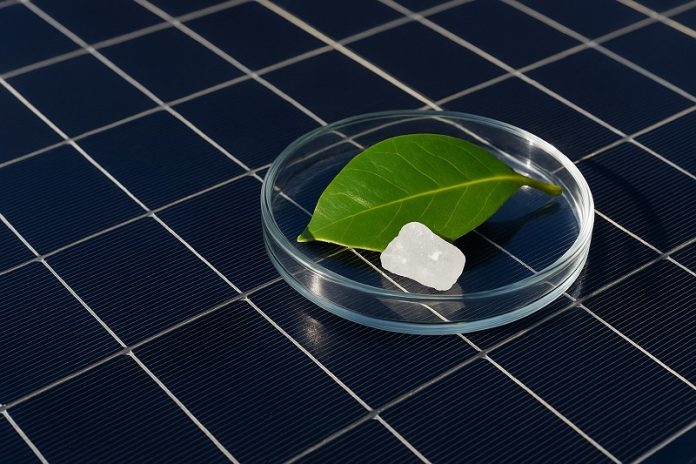
In an exciting development for green energy, scientists have discovered a way to make solar cells both more efficient and longer-lasting using a compound derived from the camphor tree.
The breakthrough could lead to cheaper, more durable solar panels and help speed up the transition to clean energy.
The research was led by Professor Changduk Yang and his team at the School of Energy and Chemical Engineering at UNIST in South Korea.
They focused on improving perovskite solar cells—a promising type of solar cell known for being inexpensive and highly efficient but often limited by durability and stability issues.
Perovskite solar cells are made from thin films containing many tiny crystals. The larger and more orderly these crystals are, the better the solar cell works. However, making these crystals uniform is tricky.
Scientists often use additives to help the crystals form properly, but those additives can leave behind tiny leftovers that weaken the final product.
To solve this, the team turned to camphorquinone (CQ), a compound based on camphor, which is naturally extracted from camphor trees.
Unlike many other additives, CQ doesn’t leave behind any residue. Instead, it slowly evaporates in two stages during the manufacturing process, first helping the crystals form evenly and then disappearing completely during a second round of heating.
This “clean exit” means no leftover material is stuck in the solar cell film, which helps create a purer and more stable structure. “CQ can be precisely timed to influence the crystal growth phase and leaves no residual material in the film,” explained Jeewon Park, the first author of the study. “This unique property enabled us to produce high-quality perovskite films.”
The results speak for themselves. Solar cells made with this CQ-based method reached a power conversion efficiency of 25.2%, compared to 23.0% for those made without additives—an impressive 9.6% improvement. Even more importantly, these improved solar cells held on to over 90% of their efficiency after 1,000 hours of continuous use in simulated sunlight. This is more than double the lifespan of the standard version.
Professor Yang emphasized the significance of using a natural, eco-friendly material like camphor to solve one of the biggest problems in solar cell technology. “Solving stability issues in perovskite solar cells using naturally derived materials not only advances sustainable energy but also paves the way for more durable, cost-effective solar solutions,” he said.
The findings were published in the journal Energy & Environmental Science and represent a major step forward in making solar power cleaner, stronger, and more accessible for everyday use.
Source: KSR.



